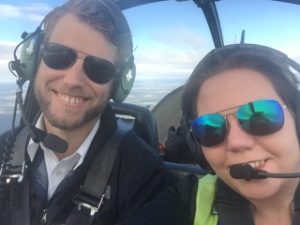Educational Technology Consultant and Lumos Learning founder Sarah Hill helps schools in Western Australia implement technology in their classrooms. A former teacher, she understands the many hurdles when adopting new tech programs, and has a unique way of solving the lack of bandwidth issue in the remote schools she works with.
We chatted recently with Sarah about what drove her to leave the classroom for consulting, and her vision to deliver Information and Communications Technology to all students, regardless of their location or socio-economic status.

Showbie: Tell us about yourself
SH: I’m 38, I live in Perth with my amazedly patient husband who looks after my 4 kids (aged 16,14,10 and 9) when I am away. I have two adorable dogs; a Maltese/Shitzu and a Cavalier King Charles/Pug and a tuxedo cat, who allows us to look after him. I love to fly (I’m learning to be a pilot) and any arts and craft activities.
Showbie: How long did you teach and why did you stop?
SH: I taught for 8 years. I got into teaching when I had my 4th child… I thought it would be great to have school holidays off!
Showbie: What grades and subjects did you teach?
SH: I have taught k-9. I really enjoy early years learning and I have been both a classroom teacher and specialist. As a specialist I taught everything from NAPLAN review to kindy HASS and my all time favourite — Technologies.
Showbie: What made you switch to consulting?
SH: I really wanted to travel to regional and remote schools and help them make sustainable change. The teachers and students in our regional and remote schools are so inspiring!
Showbie: What are some of the top challenges you see when schools implement new technologies?
SH: The biggest challenge for implementing technology in schools is often lack of clarity of the purpose and direction of the technology being implemented. We always need to have a clear idea of why we are using technology and what we want the students to be able to achieve. We then need to empower the teachers with great pedagogy and curriculum knowledge to implement this in a way that will motivate and engage students.
Showbie: You often work with remote schools. What are the challenges unique to those schools?
SH: A big challenge for implementing technology in rural and remote areas is the lack of bandwidth to be able to download apps and get the infrastructure working. It can also be really difficult to get consultants to visit as the travel time can be over 10-15 hours’ drive from a regional airport. Some of our remote schools have a 2MB satellite link to service the whole school community. In these occasions I team up with a pilot and fly out to the school in a small 4 seater plan. We can then use the plane to fly above a local mine site which has 3G or 4G to authenticate the required apps and get the devices working. I’m currently training to be a pilot so that I can do more of these trips myself!
Showbie: What advice would you give to a school thinking of going 1:1?
SH: The most important would be to have a clear purpose for going 1:1. So asking “What benefits will the students gain from the change?” The next things to think about are: sourcing great professional learning for teachers to implement effective pedagogy, creating a shared leadership team for the project for succession planning in case key people leave, and getting the community involved – open up the classrooms to show the amazing things students can do with devices.
Showbie: What are some of the best ways you’ve seen technology used in the classroom?
SH: I love the accessibility features of devices, the best thing I’ve seen is in a classroom of year 5-6 students where two thirds of the class cannot read or write. I worked with the teacher to show the students how to use dictation and text to speech to create their work. This resulted in students who hadn’t had work displayed on the wall in 4 years being able to produce full pages or written responses. The confidence boost that this gave the students flowed into attendance and behaviour improvements. The students also became a lot more engaged in the content because they could participate fully in all of the activities.
Showbie: What made you interested in Showbie?
SH: I’m interested to see how Showbie can be used to engage students and teachers across schools in regional and remote areas.



